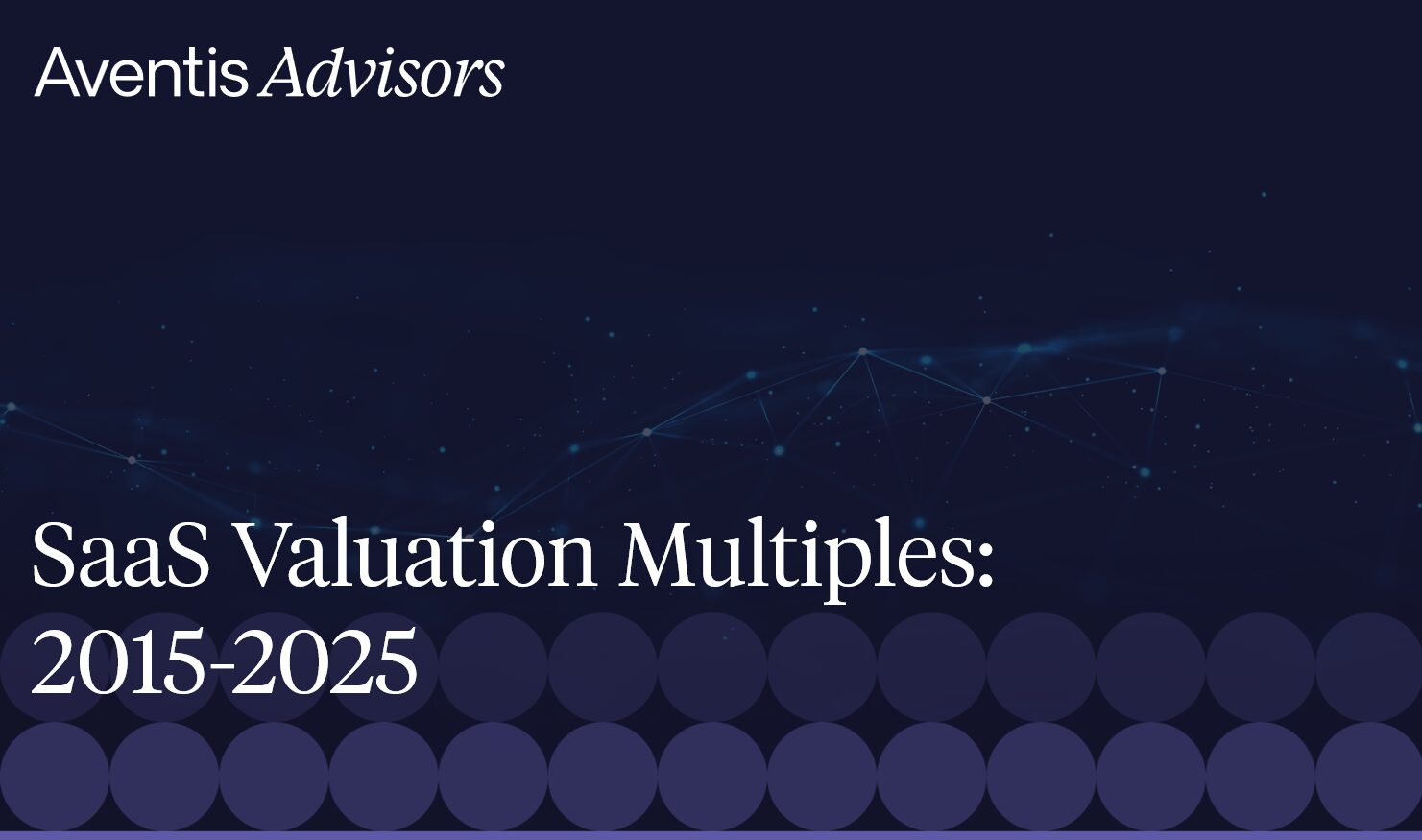Introduction
The software-as-a-service (SaaS) industry has exploded in recent years, with more businesses adopting cloud-based solutions over traditional on-premise software, providing users access to software applications over the internet, usually via a subscription model. With the rapid growth of SaaS, merger and acquisition (M&A) activity in this space has also heated up. The scalability of the SaaS business model produces recurring solid revenues and cash flows, making it very appealing to a large group of acquirers.
In this blogpost, we delve into the SaaS M&A landscape. Our study encompassed a decade-long timeframe, spanning from 2013 to end of 2024. We used Crunchbase, where a total of 3,598 SaaS deals were recorded for the analyzed period to get an overview of the M&A landscape of the industry. Information about the financials of the acquisitions (deal size and valuation multiple) was collected using Mergermarket.
Total Deal Volumes
Starting in 2013, the SaaS acquisition landscape experienced consistent growth until the advent of the COVID era, which brought about unprecedented market upheavals. The digitalization tailwind supported this early growth trajectory until 2020, when the total number of deals contracted by 16.4% to 295, signaling a noticeable downturn.
However, in a remarkable turnaround, 2021 witnessed an extraordinary surge in dealmaking activity, with the number of SaaS transactions doubling to 614. Supporters of this growth include a low-interest-rate environment, robust investor appetite for high-growth firms, and the tailwinds generated by accelerated digitalization, particularly as companies seek cloud-based solutions, including in fields like data analytics and enterprise software.
In 2022, dealmakers and investors opted for a notably more prudent approach, with market conditions souring due to escalating inflation, hawkish monetary measures, and the outbreak of the Ukraine war as a result. As a result, the acquisition of SaaS companies witnessed a sharp 23% decline in 2022. Looking ahead, the data from the first two quarters of 2023 suggests that this trend will likely persist throughout the remainder of the year. Historically, Q1 has been the peak for acquisitions, with deal activity gradually diminishing as the year draws closer. 2023 ended with a total SaaS deal count of 300, dropping below pre-COVID levels. As we mentioned, the first two quarters were more active than the back half of 2023.
In 2024, SaaS M&A saw a strong rebound, increasing more than 41% compared to 2023. This was driven by improved market confidence, attractive valuations, and acquisitions of key technologies. A notable example was Cisco’s $28B Splunk acquisition, which aimed to strengthen its data analytics and security capabilities.
Deal Volumes by Country
Unsurprisingly, the United States emerged as the undisputed leader in SaaS dealmaking over the examined timeframe. The country is a leading provider of innovation, supported by Silicon Valley and a large group of financial investors, as well as the world’s largest technology companies offering extensive software solutions. Between 2013 and the second quarter of 2024, a staggering 2146 deals were recorded in the USA, accounting for 59.6% of the overall deals analyzed.
Europe secured the second position, contributing 912 SaaS deals, equivalent to 25.3% of the overall transactions. The United Kingdom played a prominent role, spearheading the region with 269 transactions. Following from a distance were France with 129 deals and Germany with 122. The large discrepancy in deal volumes between Europe and the United States stems primarily from the USA leading on both the supply and demand sides. It far outpaces Europe in the number of potential SaaS acquisition targets and the number of acquirers.
Deal Volumes by Total Funding
In our analysis, we looked at the total funding behind the acquired SaaS companies and found that more than one-third were bootstrapped when sold.
SaaS buyers like bootstrapped companies because they come with a proven, self-sustained business model achieved without external funding. Moreover, their valuations tend to be more reasonable compared to companies backed by financial investors, who have their exit valuation agenda. Bootstrapped firms prioritize sustainability and profitability, unlike those fixated on rapid, costly growth.
How to Evaluate an M&A Term Sheet
The second largest category in deal flows after bootstrapped SaaS companies, consisted of businesses with total funding ranging from $1 million to $5 million. Usually, companies in this segment already have an established product with a well-defined target market and a proven customer base. Given the relatively modest total funding, companies in this category are generally smaller. This can present buyers with more appealing valuations, and also, there will likely be fewer external capital providers of the target company that the acquiree will have to negotiate with.
Deal Volumes by Last Funding Round
Out of the 3,598 SaaS deals recorded in Crunchbase from 2013 to the end of 2024, when excluding the bootstrapped SaaS companies, this leaves us with 2,359 acquired targets for which the “last funding type” information is available.
As we said before, a similar trend appears here. Most SaaS companies that engaged in fundraising were acquired relative earlier in their development journey. Several reasons underpin this pattern, including:
- Synergy opportunities: strategic investors recognize a target’s value early and can benefit from cross-selling or up-selling to existing customers.
- Founders opting for early exit: in some instances, founders chose to exit early rather than continue the running the company.
- Avoid ownership dilution: buyers often prefer acquiring SaaS businesses before additional funding rounds dilute ownership. This results in fewer stakeholders to negotiate with during a deal.
- Scaling and customer acquisition challenges: scaling operations and acquiring a substantial customer base can create formidable hurdles for certain SaaS firms. As a result, they may look towards acquisition as a more complete solution instead of trying to grow using only their own resources.
- Intensifying competition with growth: the landscape can become increasingly competitive for a SaaS company as it grows, necessitating more significant capital injections to remain attractive.
While not constituting a significant percentage of the industry, the SaaS sector exhibits a noticeable level of private equity engagement. Financial investors are particularly drawn to SaaS business models, attracted by their considerable growth potential and the asset-light operational framework. Notable participants among private equity buyers encompass firms such as Vista Equity Partners and Thoma Bravo.
Deal Volumes by Company Headcount
The analysis of deal counts by headcount shows a prevailing trend: most acquisitions occurred when companies were still relatively modest in their workforce. Small-to-mid size firms (not too small, as many financial investors have a minimum ticket size) tend to attract a broader spectrum of potential buyers, fostering increased competition in the acquisition arena.
However, as we progress along the company size spectrum, there is a noticeable decline in the frequency of acquisitions. Between 2013 and 2024, a mere 86 SaaS businesses with a headcount exceeding 1,000 employees were acquired, signaling a shift in the dynamics of the acquisition landscape as the size of the targets grows.
Out of the 3500+ SaaS deals, 60% of the companies had less than 50 employees. This can be for multiple reasons including, but not limited to;
- Companies with smaller headcounts have smaller valuations.
- Strategic buyers prey on smaller companies with innovative SaaS solutions and buy them out to unlock synergies, and gain a team with a strong know-how.
From Founded to Acquired
We analyzed the time between a company’s founding and acquisition date. The results aligned with our previous findings that most SaaS deals involve smaller and early stage companies.
Looking closer, about one-third of SaaS companies were acquired within the first five years. Extending the observed window to one decade, we see that around 73% of SaaS firms were sold within this time period. On the other end of the spectrum, only a few companies were acquired within two years of being founded.
Median Valuation Multiple
We used Mergermarket to get data on valuation multiples. Looking at over 1,000 software company deals since 2015, we identified 460 SaaS transactions with published financials.
SaaS valuation multiples: 2015-2023
From 2015 to 2024, the median SaaS valuation was 4.7x revenue, but a quarter of the deals closed above 8.3x. Despite the 2020-2021 public market boom, median M&A multiples only grew slightly from 5.8x to 6.3x before falling back to 5.4x in 2022, and have continued to fall throughout 2023 and 2024. The latest recorded multiple for 2024 was around 3x revenue for the median SaaS company.
How Likely Is It for a SaaS Startup to Exit?
Despite the hype around SaaS exits valued in the billions with blockbuster IPOs and strategic sales, the reality is that lucrative liquidity events are rare. Most startups will not go public or sell for huge sums.
In our segment of 37,000+ companies marked as SaaS in Crunchbase, only 10% were acquired. Most of the companies continue to operate as a private entity waiting for the moment. The routes to exit are also non-obvious; while IPOs are getting the most attention, they only represent 6% of the exits.
Conclusion
We expect acquisitions to remain the dominant exit strategy as demand grows among buyers looking to acquire SaaS solutions and integrate them into their stacks. Some other trends that we see in the near future and expect to impact the M&A landscape of SaaS businesses:
- Ongoing trend of companies staying private longer, delaying or avoiding public listing.
- With lower public market valuations, we expect fewer stock deals. Pre-IPO companies closely track public markets, so their valuations and acquisition appeal may decrease, too.
- Venture-backed firms focusing on growth over profits face lower valuations as markets increasingly favor profitability. Such profitable SaaS companies often do not have external investors, so dealmaking activity among bootstrapped firms is expected to remain hot.
- In emerging markets, tech-savvy companies can grab market share from public rivals through superior technology. So rather than push for IPOs, private equity firms that own such companies may retain their investments longer, possibly even inject more capital in it.
- Large-cap deal volume has decreased as debt costs have surged. Investors now find investing in these large scenarios, often laden with debt, more challenging. Consequently, they diversify their investments across multiple smaller deals, intensifying the focus on deal volume in the middle market.
- PE funds are downsizing as raising mega-funds becomes more challenging. Mega funds still pursue significant take-private deals, but they are also establishing smaller funds to invest in the middle market due to the high demand for deployment. Smaller deals usually involve less financial engineering, which is beneficial amid the high-interest rate environment.
M&A in the Software Industry: Over 39k deals between 2013 to 1H 2023
2025 SaaS M&A Outlook
- As we step into 2025, we believe SaaS deals will again return to the market. The focus will remain on a clear path to profitability for SaaS companies, and valuation multiples will continue reverting to their long-term averages.
- Artificial Intelligence (AI) is expected to remain in focus.
- Contrary to concerns that AI might overshadow traditional SaaS, we think that both will coexist and complement each other in 2025 to drive synergy potential. Put simply, SaaS will ‘not’ take a backseat or be forgotten by VCs and strategic investors as AI becomes all the rage.
- Vertical SaaS solutions will likely generate more M&A interest than their horizontal peers. This trend aligns with the growing demand for tailored SaaS solutions that address industry-specific challenges and requirements.
Why you need a SaaS M&A advisor
Keeping track of SaaS company valuations is vital for understanding market trends and effectively timing your exit strategy. However, every SaaS business is distinct, reflecting the unique paths of their founders. Therefore, consulting with SaaS M&A experts, especially those specializing in the sector, is essential to a successful sale-process.
SaaS M&A advisors are adept at navigating market dynamics and valuations while coordinating all necessary workstreams. While you focus on managing your business, SaaS M&A advisors meticulously handle every detail, advocating for the best possible deal. Their success is intrinsically tied to yours through a success fee, and they can therefore significantly impact the final sale price.
About Aventis Advisors
Aventis Advisors is an M&A advisor for SaaS companies. The world would be better off with fewer (but better quality) M&A deals done at the right moment for the company and its owners. Our goal is to provide honest, insight-driven advice, clearly laying out all the options for our clients – including the one to keep the status quo.
Feel free to contact us to learn more about M&A opportunities in the technology sector.
Contact Us
Tell us about what you want to achieve; we can support you from start to close on your M&A journey.
Read also:





